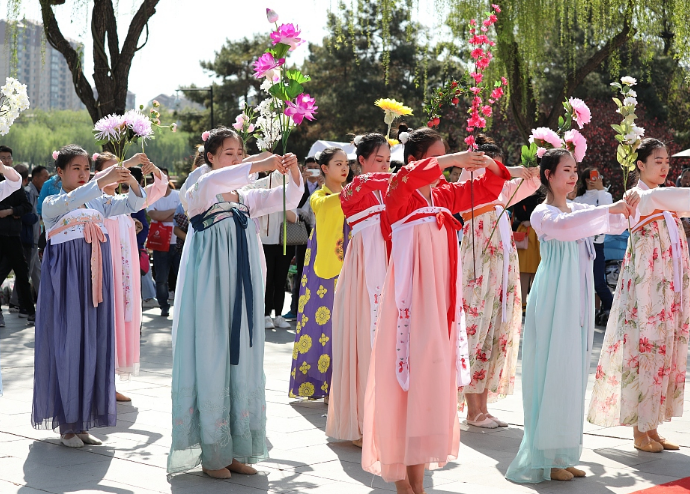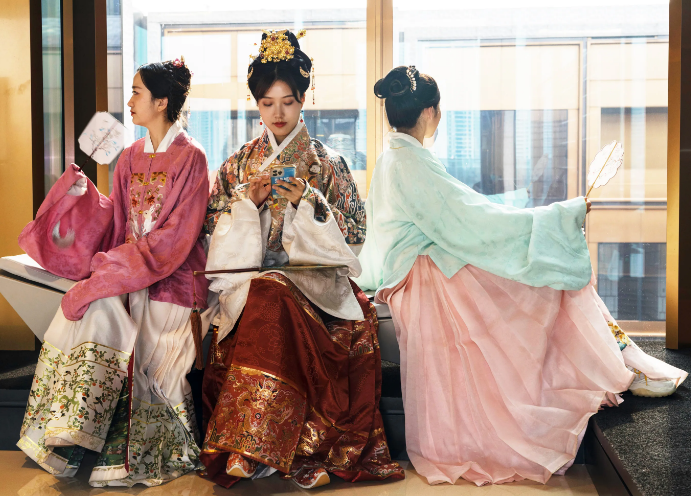The Hanfu controversy involves debates over cultural identity, traditionalism, and commercialization impacts in modern society.
Overview of Hanfu Controversy
The Hanfu movement, a cultural phenomenon in China, has sparked both interest and debate over its implications for Chinese identity and cultural revival.
Definition and Historical Background of Hanfu
Hanfu refers to the traditional clothing of the Han Chinese people. Tracing its origins back over 3,000 years, Hanfu was predominant during the dynastic periods until the Qing Dynasty’s imposition of Manchurian styles. The revival interest in Hanfu began in the early 21st century, partly as a response to global cultural influences. It’s not just a fashion statement but a symbol of cultural identity and historical continuity.
Rise of the Contemporary Hanfu Movement
The contemporary Hanfu movement started gaining momentum in the early 2000s. It’s more than a fashion trend; it’s a statement of cultural pride and a form of reconnecting with Chinese heritage. This movement, driven by the younger generation, has been influential on social media platforms, with Hanfu communities boasting members in the hundreds of thousands. For example, a 2018 survey showed that over 2 million people participated in Hanfu-related events.

One significant aspect of this movement is its economic impact. The Hanfu market has seen a steady increase, with a reported annual growth rate of approximately 20% in recent years. This economic boost, however, brings into question the balance between commercialization and cultural preservation.
The movement has not been without its controversies. Debates around the Hanfu movement often center on issues of cultural nationalism and identity politics. Critics argue that the movement’s emphasis on Han Chinese clothing could marginalize other ethnic groups in China, while proponents see it as a rightful celebration of Chinese heritage.
For more detailed information on Hanfu, visit the Wikipedia page on Hanfu.
Cultural Identity and Hanfu
The relationship between Hanfu and Chinese cultural identity is complex, embodying a rich historical legacy and contemporary social dynamics.
Hanfu and Chinese Cultural Identity
Hanfu represents more than traditional attire; it is a symbol of Chinese cultural identity and heritage. The Hanfu movement has played a crucial role in reviving interest in ancient Chinese traditions, rituals, and aesthetics. It’s not merely about clothing; it’s about connecting with a history that spans thousands of years. In recent years, the number of Hanfu enthusiasts has grown exponentially, signifying a collective yearning for cultural roots among the younger generation.
The Economic Aspect: The resurgence of Hanfu has created a niche market. As of 2020, the Hanfu industry was valued at approximately $1.5 billion, with a significant portion of this driven by online retail platforms. This economic surge, however, raises questions about commercial exploitation versus genuine cultural revival.
Hanfu’s Place in a Multicultural Context
In a multicultural context, Hanfu’s significance extends beyond national borders. It has become a global symbol of Chinese culture, often used in cultural exchanges and international events to represent China. However, this global presence also brings challenges. The Hanfu movement must navigate between promoting cultural pride and avoiding the pitfalls of cultural exclusivity.
Debates and Discussions: Critics often point out that while Hanfu symbolizes Han Chinese culture, it may inadvertently overshadow the rich diversity of China’s 55 other ethnic minorities. Proponents, however, argue that Hanfu’s revival is a way to strengthen Chinese cultural identity in an increasingly globalized world.
Hanfu and Traditionalism
The revival of Hanfu is deeply intertwined with Chinese traditionalism, reflecting a blend of historical appreciation and contemporary cultural dynamics.
Traditional Values and the Revival of Hanfu
Hanfu is not just a revival of traditional Chinese clothing; it embodies a broader reconnection with traditional Chinese values and aesthetics. The movement symbolizes a return to Confucian ideals, emphasizing harmony, ritual, and social order. This revival has been particularly popular among China’s youth, who see Hanfu as a way to explore and express their cultural heritage.
Market Impact: The Hanfu industry’s growth is remarkable, with an estimated market value of over $1 billion as of 2021. This growth is propelled by both cultural interest and fashion trends, bridging traditional values with modern consumerism.
Conflicts between Hanfu Revival and Modern Society
While the Hanfu movement promotes traditional values, it also faces challenges in the context of modern society.
Balancing Tradition and Modernity: The movement has sparked debates over cultural identity and the relevance of ancient traditions in contemporary China. Some view the Hanfu trend as a nostalgic escape from modern complexities, while others see it as a meaningful cultural revival.
Inclusion and Diversity: Another point of contention is the movement’s focus on Han Chinese traditions, raising concerns about inclusivity in a diverse society.
Comparative Analysis
Here’s a table comparing aspects of Hanfu revival in traditional and modern contexts:
| Aspect | Traditional Context | Modern Context |
|---|---|---|
| Cultural Significance | Symbol of Han identity and social order | Expression of cultural heritage |
| Economic Impact | Not applicable (historical attire) | Estimated $1+ billion market value |
| Social Reception | Uniform social norm | Diverse, with varying opinions |
| Global Influence | Limited to historical China | Increasing global interest |
For more information, explore the Wikipedia page on Chinese Traditionalism.
Commercialization and Hanfu Culture
The commercialization of Hanfu culture has been a double-edged sword, playing a pivotal role in both popularizing and potentially diluting the essence of this traditional Chinese attire.
Development of the Hanfu Market
The Hanfu Market’s Growth: The Hanfu industry has seen a rapid increase in popularity, particularly among the youth. In 2020, the market size was estimated at around $1.5 billion, with a projected annual growth rate of 10-15%. This growth is driven by a surge in online retail platforms and social media marketing, making Hanfu accessible to a broader audience.
Diverse Offerings: The market offers a wide range of Hanfu styles, from historically accurate reproductions to modern adaptations. Prices vary significantly, with simple designs starting around $30 and elaborate, high-quality pieces costing upwards of $300.
Impact of Commercialization on Hanfu Culture
Cultural Authenticity vs. Commercial Interests: The commercial success of Hanfu raises questions about the balance between preserving cultural authenticity and catering to market demands. While increased accessibility has helped popularize Hanfu, it has also led to variations that stray from historical accuracy.
Bold Statement: The Challenge of Standardization: With no formal standards, the quality and authenticity of Hanfu garments vary widely. This lack of standardization can lead to misunderstandings about what constitutes authentic Hanfu, potentially diluting its cultural significance.
Consumer Perception: A survey conducted in 2019 revealed that while most consumers appreciate the cultural aspect of Hanfu, a significant number view it primarily as a fashion statement, indicating a shift in perception due to commercialization.

Social Perspectives in the Hanfu Controversy
The Hanfu movement has generated diverse social perspectives, reflecting a complex interplay of cultural identity, tradition, and modernity.
Viewpoints of Supporters
Cultural Revival and Pride: Supporters of the Hanfu movement advocate for it as a means of cultural revival. They argue that wearing Hanfu is a way to reconnect with Chinese history and heritage. This viewpoint is particularly prevalent among young people; a 2020 survey found that over 60% of Hanfu enthusiasts are under the age of 30.
Economic and Social Benefits: Proponents also highlight the economic benefits of the Hanfu industry, which has seen a significant market growth, contributing to local economies and job creation. Furthermore, Hanfu events and communities are seen as promoting social cohesion and cultural exchange.
Criticisms and Counterarguments
Concerns over Cultural Misinterpretation: Critics argue that the movement may lead to a misinterpretation of Chinese history, as modern Hanfu designs often mix elements from different historical periods. This concern is compounded by the lack of standardization in Hanfu production.
Inclusivity Issues: Another criticism focuses on the inclusivity aspect. Critics point out that emphasizing Han Chinese culture could marginalize other ethnic groups in China. However, supporters counter this by noting that Hanfu is open to everyone interested in Chinese culture, regardless of their ethnic background.
Commercialization Impact: The commercialization of Hanfu is seen by some as diluting its cultural authenticity. In response, many Hanfu enthusiasts emphasize the importance of educating consumers about the historical and cultural significance of Hanfu.